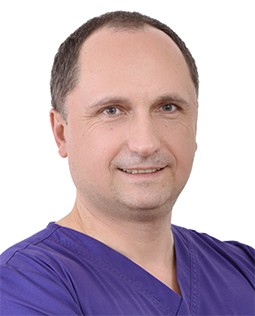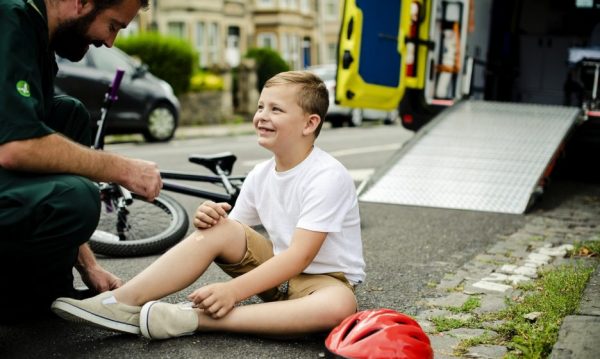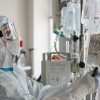The helmet reduces the likelihood of a head injury by 50%, a serious head injury by 69%, as well as reduces the likelihood of fatal head injuries by 65% according to a study in 11 countries involving 64,000 cyclists. Ilya Zelenkin, a traumatologist, told Pravmir why you should not get on a bicycle without wearing a helmet and what dangerous consequences there can be when riding without protection.
— What are the main injuries that occur when falling off a bicycle?

Ilya Zelenkin
— If we are talking about children, there are impact injuries, abrasion marks and fractures. But doctors are mostly concerned about craniocerebral injuries, as depending on their severity, this may be a life-threatening condition for a child.
Most often, when a child falls off a bicycle, they fall on their side or go head over heels over the steering wheel, therefore, the risk of getting a head injury is quite high. And if a child is not protected by a helmet, this risk increases a hundred-fold.
— What kind of injuries are prevented by wearing a helmet when riding a bicycle?
— Firstly, soft tissue impact injuries, bruises, superficial abrasions, various wounds if the child bumped into something when falling or hit something – for example, fell to the ground, hit against a stone or a tree. Secondly, it protects against more serious injuries: concussion, cerebral contusion, damage to the skull bones if the child was riding at a high speed or if there was a serious collision with obstacles.
— What are the most serious problems?
— Concussion is a mild closed craniocerebral injury, the child should stay in a hospital for several days under doctor supervision.
A cerebral contusion differs from a concussion in a more pronounced degree of severity of the pathological process, when subjected to the traumatic factor, foci of hemorrhage appear in the brain tissues. A cerebral contusion is often accompanied by skull bones fractures. This is a very serious injury, which requires a CT scan or MRI, and depending on the hematoma size and location, either cranial trepanation or conservative treatment in a hospital may be required as well.
Cerebral compression is a progressive pathological process in cranial cavity that occurs after a head injury (skull bones fractures with penetration of the brain matter with skull fragments, intracranial hematomas).This process results in brain stem coning and development of a life-threatening condition and it requires the most complex neurosurgery with the patient staying in the intensive care unit.
— What are the most important areas that a helmet protects?
— It covers almost all areas of the skull: parietal, occipital, temporal and frontal lobes, that is, those lobes where damage to skull bones with serious future consequences for the child’s health is most likely.
— People started using helmets when riding a bike not so long ago. Are there less such injuries?
— There are less injuries, but not by much. Yet, their severity is less serious, probably due to the active use of protective equipment, including helmets. This tendency has been observed over the past couple of years.
Parents started making their young children actively use helmets. Most parents do it themselves, thus showing that this should be done.
Teenagers are less likely to use helmets because they believe they look ridiculous wearing them. Adolescent children with craniocerebral injuries are admitted to hospital emergency rooms quite often precisely because they do not wear a helmet when riding a bike.
Perhaps, the following argument will be relevant in favor of more active use of helmets by teenagers:
“Why do you use a special case for your phone protection, but do not wear a helmet for protection of your own head?”
— How to pick the right helmet?
— It is better to ask a consultant in a store about this, they will help to choose a helmet, in which the child will feel comfortable and ride a bike safely.
— Does the child need to wear a helmet in a special bicycle seat?
— Yes, of course. For the child is secured there, but their head is not protected by this chair. If the parent loses control and falls, then the child may get a head injury, therefore protection is necessary.
— If the child is wearing a helmet, can they get a head injury?
— The helmet reduces the risk of a serious craniocerebral injury.
In 2016, 40 independent studies were conducted in 11 countries involving 64,000 injured cyclists.
The following conclusions were made: the helmet reduces the likelihood of a head injury by 50%, a serious head injury by 69%, as well as reduces the likelihood of fatal head injuries by 65%. Moreover, using a helmet reduces the likelihood of damages to facial area by 33%.
— What are the most serious injuries you have encountered in your practice that happened to children who fell from bicycles?
— The most serious injuries are among teenagers who practice riding special bicycles intended for extreme riding or for performing tricks, without protection and helmets. Those are severe craniocerebral injuries combined with internal injuries, as well as various limb bones fractures that require surgical treatment and further rehabilitation.
— Should one change their helmet after falling?
— Yes, absolutely. The design of the helmet is such that it is intended to absorb one impact. It is better to replace it as it will not protect correctly the second time. Even if the impact was not very strong, in this case, the inner foam layer is compressed. This may not be noticeable, but the integrity of the helmet design will already be violated, which will require its replacement.
Translated by Julia Frolova


















